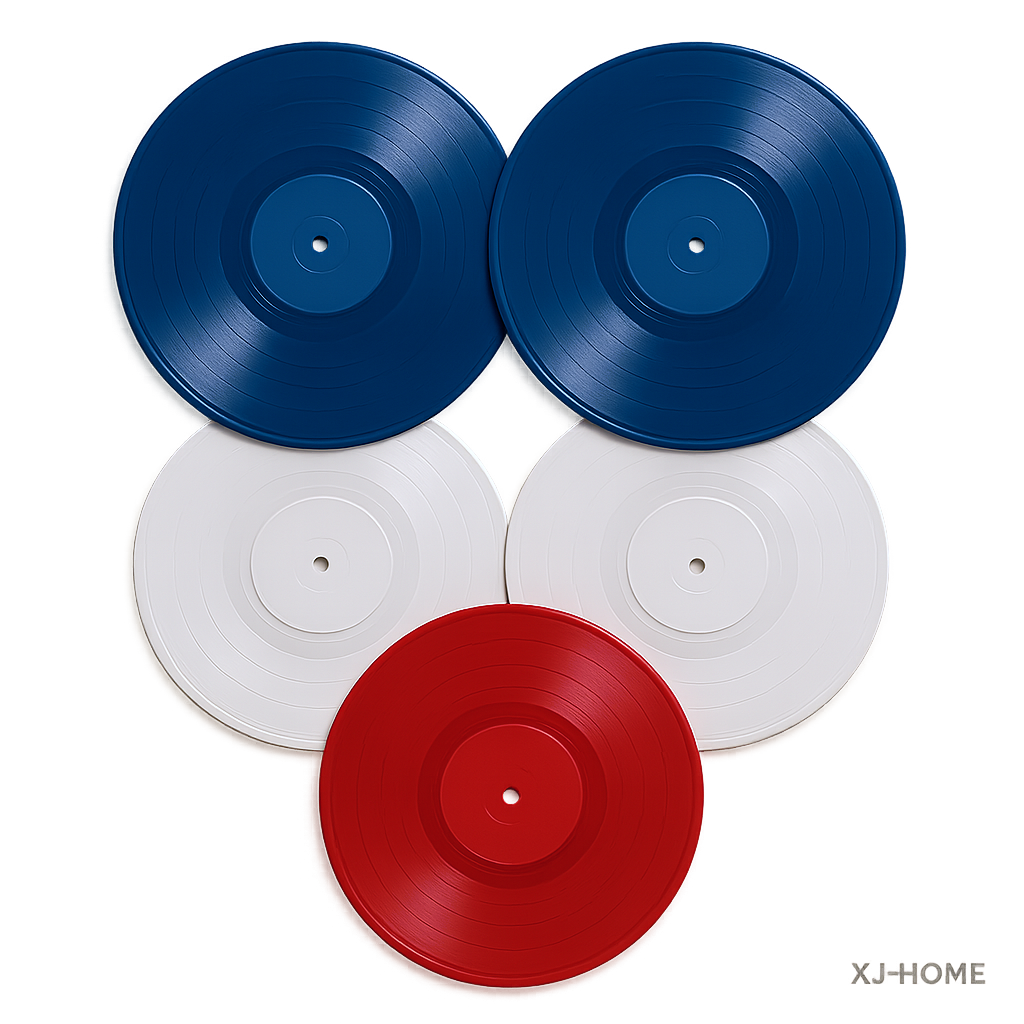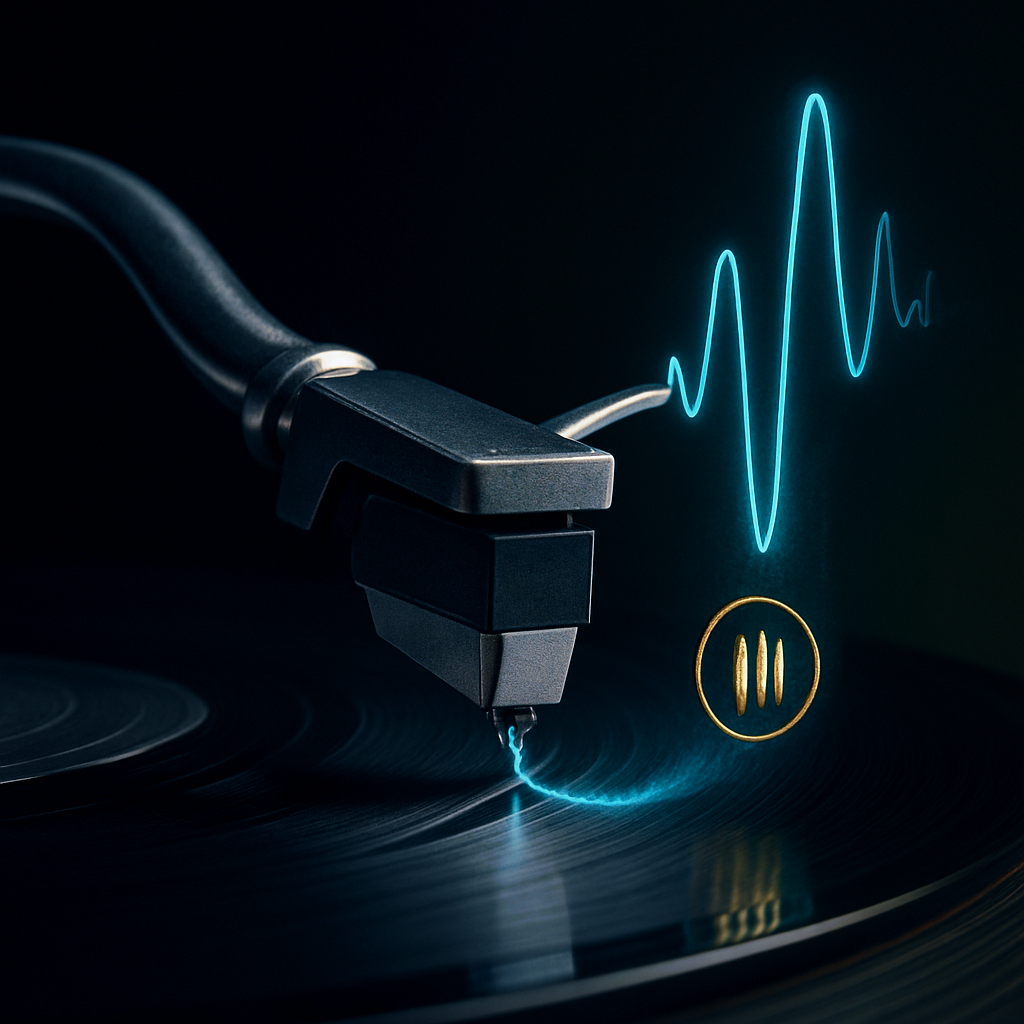The turntable. To the uninitiated, it might seem like a quaint, perhaps even anachronistic device. But to those of us who've been captivated by the ritual of vinyl, it's a marvel of electromechanical engineering, a tactile bridge connecting us to the very soul of music. Understanding its constituent parts isn't just an academic exercise; it’s the key to appreciating the intricate dance of physics and artistry that brings our records to life. It empowers you to make informed choices, troubleshoot with confidence, and ultimately, extract more joy from your collection.
Let's pull back the curtain and explore the essential components that work in concert to spin those black circles into sonic gold.
The Foundation of Spin: Plinth, Platter, & Motor
These three components form the core support and drive system, the bedrock upon which everything else relies. Their job is to provide a stable, vibration-free environment for the record to spin at a precise and consistent speed.
-
The Plinth (or Chassis): The Unshakeable Base
-
What it is: The main body or base of the turntable.
-
Why it matters: The plinth’s primary role is to provide a rigid, stable platform for all other components and, crucially, to combat unwanted vibrations. Vibrations are the enemy of clear vinyl playback – they can come from the motor, your speakers, footsteps, or even airborne sound waves. A well-designed plinth will absorb or dissipate these resonances before they can reach the stylus.
-
Materials & Design: You'll see plinths made from various materials: MDF (Medium Density Fiberboard) is common for its good damping properties and cost-effectiveness. Hardwoods, acrylics, metal alloys, and even stone or slate are used in higher-end designs, each chosen for its specific mass, rigidity, and resonant characteristics. Some plinths are solid; others use a suspended sub-chassis design for further isolation.
-
The Deeper Groove: Don't underestimate the plinth. It’s more than just a pretty box. It’s the first line of defense in the war against sonic interference. At XJ-HOME, we believe that a truly exceptional audio experience starts with an uncompromised foundation, a philosophy evident in every piece of gear we admire and discuss. You can explore our thoughts on quality audio at https://xenonjade.com.
-
-
The Platter: The Record's Stage
-
What it is: The rotating disc upon which the record sits.
-
Why it matters: The platter must support the record perfectly flat and rotate at a consistent speed without introducing any noise or vibration of its own.
-
Materials & Design: Platters come in a range of materials:
-
Metal (Aluminum, Steel, Alloys): Often chosen for their mass and rigidity. Heavier platters contribute to speed stability (the "flywheel effect"), helping to smooth out minor motor speed variations.
-
Acrylic: Popular for its acoustic properties, which are said to be similar to vinyl itself, potentially helping to damp record vibrations.
-
Glass: Can be very flat and dense.
-
MDF or Composite Materials: Sometimes used, often with a mat on top.
-
-
The Mat: Most turntables use a mat (felt, rubber, cork, leather, or specialized composites) between the platter and the record to provide grip, damping, and sometimes to adjust the Vertical Tracking Angle (VTA) slightly.
-
The Bearing: Beneath the platter lies the main bearing assembly, a critical and often unsung hero. This allows the platter to spin smoothly, quietly, and with minimal friction. A high-quality bearing is essential for low wow & flutter (speed variations) and a low noise floor.
-
-
The Motor: The Heartbeat of Rotation
-
What it is: The engine that provides the rotational force to spin the platter.
-
Why it matters: The motor's job is to maintain an exact and unwavering speed (33 1/3 or 45 RPM) without transmitting its own vibrations to the plinth or platter.
-
Common Types:
-
Belt Drive: The motor is offset from the platter and connected via an elastic belt. This design helps to isolate motor vibrations from the platter. The quality of the belt and the precision of the motor and pulley are key.
-
Direct Drive: The motor is located directly beneath the platter and is part of the platter assembly itself. Modern direct-drive systems offer excellent speed stability and torque (quick start-up). Early direct-drive tables sometimes suffered from "cogging" (slight speed pulsations), but contemporary designs have largely overcome this.
-
Idler Wheel (Mostly Vintage): A rubber-coated wheel transfers rotation from a high-speed motor to the platter rim. Known for their robust torque, but can sometimes transmit motor rumble if not perfectly maintained.
-
-
The Deeper Groove: Speed accuracy is paramount. Even slight deviations can affect musical pitch and rhythm. A good motor and drive system deliver that consistency silently.
-
Where Music Is Made: Tonearm, Cartridge, & Stylus
This trio is responsible for the delicate task of tracing the record groove and converting its microscopic modulations into an electrical signal.
-
The Tonearm: The Guiding Hand
-
What it is: The arm that holds the cartridge and allows the stylus to track the record groove from the outer edge to the inner label.
-
Why it matters: The tonearm must allow the stylus to move with almost complete freedom, both horizontally across the record and vertically to accommodate warps, while maintaining precise alignment. It needs to be rigid enough to hold the cartridge steady but light enough not to impede its movement.
-
Key Parts:
-
Armtube/Wand: The main tube of the arm. Materials (carbon fiber, aluminum, magnesium, even wood) are chosen for lightness and rigidity.
-
Pivot/Bearings: This is where the arm moves. High-quality bearings (e.g., gimbal, unipivot) are crucial for low-friction movement.
-
Headshell: Holds the cartridge at the end of the arm. Can be fixed or detachable (for easier cartridge swapping).
-
Counterweight: A weight at the back of the arm used to balance it and set the Vertical Tracking Force (VTF).
-
Antiskate Mechanism: Applies a small outward force to counteract the natural inward "skating" force generated as the stylus tracks the groove.
-
-
The Deeper Groove: A well-designed tonearm is a masterpiece of precision engineering, a delicate dance between conflicting requirements.
-
-
The Cartridge: The Transducer
-
What it is: The small device mounted on the headshell that generates the electrical signal from the stylus's movements.
-
Why it matters: It's the primary "voice" of your turntable. Different cartridges have distinct sonic characteristics.
-
Common Types:
-
Moving Magnet (MM): A tiny magnet attached to the stylus cantilever moves within fixed coils in the cartridge body. Generally have higher output, and the stylus is often user-replaceable. Known for being great all-around performers.
-
Moving Coil (MC): Tiny coils attached to the cantilever move within a fixed magnetic field. Typically have lower output (requiring an MC-compatible phono stage or a step-up transformer) and the stylus is usually not user-replaceable by the owner. Often prized for their detail, speed, and nuance, though high-output MC designs also exist.
-
-
The Deeper Groove: The cartridge is where the magic of transduction happens – physical motion becoming electrical energy, the very essence of the music.
-
-
The Stylus (Needle): The Point of Contact
-
What it is: The tiny, usually diamond, tip that physically rides in the record groove.
-
Why it matters: The stylus is the only part of your system that touches the record groove. Its shape, polish, and condition are absolutely critical for sound quality and for preserving your records.
-
Key Aspects:
-
Stylus Shapes:
-
Conical/Spherical: Simplest shape, robust, and forgiving of less-than-perfect setup. Good for older records or general use.
-
Elliptical: Smaller contact radii allow it to trace higher frequencies more accurately than conical. A very popular all-around choice.
-
Line Contact (e.g., Shibata, MicroLine, Fine Line, Hyperelliptical): More complex shapes that mimic the cutting stylus used to make records. They have a larger vertical contact area, leading to better tracking of high frequencies, lower distortion, and potentially less record wear per play (as the force is distributed over a larger area). However, they are more sensitive to precise alignment (VTA/SRA, azimuth).
-
-
Cantilever: The tiny rod to which the stylus is attached. It transmits the vibrations from the stylus to the magnets or coils in the cartridge body. Materials like aluminum, boron, ruby, or even diamond are used, chosen for their stiffness and low mass.
-
-
The Deeper Groove: Think of the stylus as a highly specialized sensor. Its ability to trace the infinitesimally small variations in the groove determines the fidelity of the entire playback chain.
-
Essential Connections & Controls
These parts ensure the signal gets where it needs to go and that you can operate the turntable correctly.
-
Phono Preamplifier (Phono Stage): The Unsung Amplifier
-
What it is: A special amplifier that does two crucial things:
-
Boosts the Signal: The output from a phono cartridge is very, very low (millivolts). The phono preamp boosts this tiny signal up to "line level," which is what your main amplifier or receiver expects.
-
Applies RIAA Equalization: Records are cut with bass frequencies reduced and treble frequencies boosted (the RIAA curve) to save groove space and reduce noise. The phono preamp reverses this curve, restoring the correct tonal balance.
-
-
Why it matters: Without a phono preamp, your records will sound incredibly quiet, thin, and tinny. It's absolutely essential.
-
Internal vs. External: Some integrated amplifiers and receivers have a built-in phono stage (often labeled "PHONO" input). Many turntables, especially budget-friendly ones, also have them built-in. However, dedicated external phono preamplifiers often offer superior performance and more flexibility (e.g., settings for different cartridge types).
-
-
Output Jacks & Ground Wire:
-
Usually RCA jacks for connecting to the phono preamp or amplifier.
-
A separate ground wire is vital to connect from the turntable to the phono preamp/amplifier to eliminate hum.
-
-
Speed Control:
-
A switch or buttons to select 33 1/3 RPM (for LPs) and 45 RPM (for singles and some audiophile LPs).
-
Some turntables also feature a pitch control to make fine adjustments to the speed.
-
-
Cueing Lever:
-
A lever that gently raises and lowers the tonearm, allowing you to safely place the stylus onto the record and lift it off. Essential for preventing accidental damage.
-
Beyond the Basics (For the Extra Curious)
Once you've mastered the fundamentals, a whole world of accessories and tweaks awaits, such as:
-
Record Clamps/Weights: Secure the record to the platter, potentially improving contact and damping vibrations.
-
Isolation Feet/Platforms: Provide further defense against external vibrations reaching the turntable.
-
Dust Cover: Keeps your turntable clean when not in use. While practical, some audiophiles remove them during playback, believing they can slightly degrade sound quality due to resonance.
Conclusion: A Symphony of Precision
A turntable is far more than the sum of its parts. It's a synergistic system where each component, from the humble plinth to the microscopic stylus tip, plays a critical role in the delicate process of extracting music from a vinyl groove. Understanding this anatomy not only demystifies the machine but also deepens your appreciation for the art and science of analog playback. It allows you to engage with your equipment on a more profound level, making choices that enhance your listening pleasure and preserve your cherished collection. For a great visual and textual overview, check out Vinyl Me, Please Magazine's "Turntable Anatomy 101".
The joy of vinyl is partly in this interaction with a beautifully engineered physical device, a sentiment we deeply value at XJ-HOME. Now, go forth and spin with newfound understanding!
Disclaimer: This is a general guide. Always refer to your specific turntable and component manuals for detailed information pertinent to your equipment.





Leave a comment
All comments are moderated before being published.
This site is protected by hCaptcha and the hCaptcha Privacy Policy and Terms of Service apply.